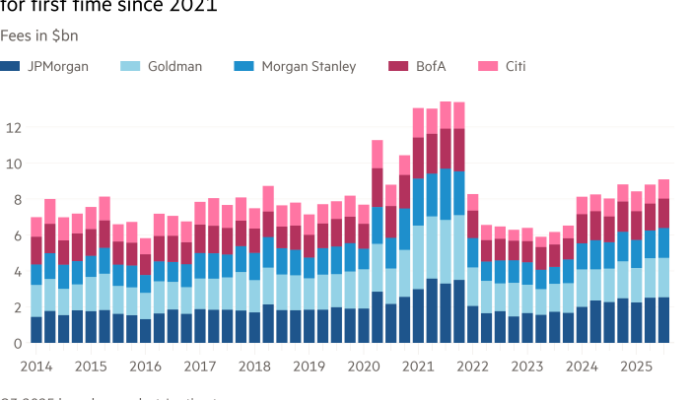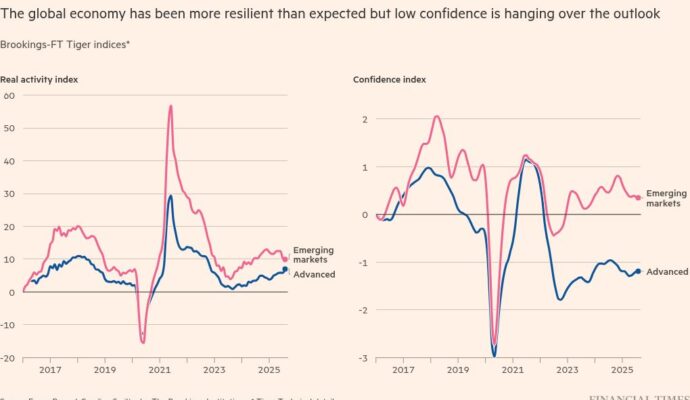Unlock the Editor’s Digest for free
Roula Khalaf, Editor of the FT, selects her favourite stories in this weekly newsletter.
The coalition that has ruled Japan for most of the past 26 years collapsed on Friday in a blow to the Liberal Democratic party’s new leader, Sanae Takaichi, before she has even secured the job of prime minister.
The disintegration of the alliance between the long dominant LDP and its junior partner, Komeito, will force Takaichi to accelerate talks with smaller, populist parties to form an effective government.
Takaichi met Komeito leader Tetsuo Saito on Friday to establish whether their coalition would continue, ahead of a parliamentary vote next week that is expected to install Takaichi as Japan’s first female prime minister.
Saito told reporters after the meeting that he had demanded the LDP apply stricter regulation on political funding, following a scandal that has dogged the larger party.
When such a commitment was not forthcoming, Saito pulled Komeito out of the partnership, which was formed in 1999.
He said that if his party “cannot secure clear and concrete co-operation from the LDP on our demands” it would not be able to vote for Takaichi.
“We intend to return the LDP-Komeito coalition government to square one and draw a line under our relationship thus far,” Saito said.
Takaichi said she was not able to respond to Komeito’s demands on her own, and offered to take them back to the LDP for discussion.
“Our party has consistently responded sincerely, striving to provide careful explanations. Moreover, given our co-operative relationship spanning 26 years, including our time in opposition, it was deeply regrettable that this conclusion was reached,” said Takaichi.
The setback and prospect of further parliamentary disarray, prompted brokers to warn of a possible reversal of “Takaichi trade” bets on her leadership, which included a stock rally that took the Nikkei 225 equity index to an all-time high this week.
Takaichi was elected to the leadership of the LDP last Saturday, becoming the first woman to hold that role. To become prime minister she must win a vote in parliament with a simple majority.
While the LDP-Komeito coalition has lost its overall majority in both houses of parliament, the LDP is still by far the largest party, meaning that Takaichi should be able to secure the post of prime minister.
However she will be reliant on deals with other parties in order to pass budgets and legislation.
In the more powerful 480-seat lower house, the LDP holds 196 seats to the Komeito’s 24. In the 242-seat upper house, the ratio is 100 to 21.
Political analysts said talks would focus on whether Takaichi seeks the support of the Democratic Party for the People, which has 27 lower house seats and 23 upper house seats, or the Japan Innovation party, which has 35 lower house and 19 upper house seats.
The Innovation party wants the city of Osaka promoted to the status of Japan’s deputy capital after Tokyo, while the DPP has indicated that it would consider joining a coalition if the LDP agreed to change income tax thresholds and abolish a tax on petrol.
Despite the raised hurdle to becoming prime minister, Takaichi is expected to get through a vote. To mount an alternative candidate the four largest opposition parties would need to co-operate to a degree that political analysts view as implausible.
Komeito was founded in the 1960s by the head of the Soka Gakkai Buddhist sect. It shares the LDP’s social conservatism, but is more dovish on defence issues and against the sort of military spending increases that Takaichi appears to favour.
Komeito has also been uncomfortable with the more nationalist streak of the LDP, whose top leadership has regularly visited the controversial Yasukuni shrine in Tokyo, where Japan’s war dead, including some war criminals, are memorialised.


